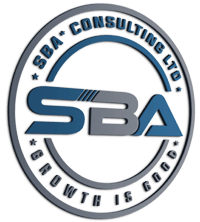Budgets/Forecasts
While there is a difference, for the typical owner, it is an interchangeable term. So, we’ll stick with that concept.
Do you budget? Do you budget for 1-month, 3-months, 12-months or longer? If you don’t, why?
A budget is a forecast (like that, used both terms in a span of 3 words) of what you THINK will happen. The shorter the term (i.e., 1 month out) the better your assumptions will be. The longer out, the less likely those figures will be either as accurate or even accurate at all. But again, as I said, your budget is what you THINK will happen.
So you sit down in December and do a 12-month budget. January you feel pretty good about, December – “ehhh…” you hope your right, but you have no idea. If you froze your budget with these numbers and never updated them, what are the effects? Here’s an interesting discussion on LinkedIn about the topic as it relates to small businesses.
Effects of a frozen budget
Having a frozen budget has its benefits. You get to see how you actually did via your financials vs what you thought you did. You can then use those variances to re-tool next year’s budget, see where you erred, and why you erred. Maybe costs went up that you didn’t predict. Maybe a sales channel did very poorly or in the reciprocal, extremely well. Remember variances can be positive or negative.
What a frozen budget doesn’t show you is market changes that you find out about after you make the budget. Maybe a deal materialized in March for the sale of 10,000 units you never dreamed about. You can’t account for that in a frozen budget (hence the term “frozen”). What do you do?
Forecasts
Ok, this is the difference. Budgets are for the year, Forecasts are used to update the budget. Every month you should re-forecast the entire budget on a go-forward basis. So at the end of January/beginning of February you should be re-forecasting February through December. If you add the next January into the forecast, you now have what is called a rolling Forecast. I like doing it for 18-months, or an 18-month rolling forecast.
This updated Forecast would capture our previous example of the 10,000 unit sale. Sure, your variance for March won’t be stellar high, but the budget/forecast has another function that it more important than saying “hey look how well we did versus what we thought!”.
Cash Flow
Your cash flow is based on two sets of financial figures. Your actual transactions, be it sales, expenses (through accounts payable) and capital outlays and prepayments. It also depends heavily on your budget/forecast. With the right tools, it would be simple to have multiple cash flow models, i.e., based on budget, based on forecast, based on assumption of prior periods, etc.
Why is the Cash Flow so important?
A cash flow will give you an idea starting with the cash in the bank on day 1 of the current month, and tell you at the end of the month and following months based on actual and forecasted data, what your cash position should be. Important, sure. It will tell you what your runway (days where you have a positive amount of cash) is and when it graphically starts to decrease. Again, with the correct tools (which SBA * Consulting uses) we can take your cash flow and look at it daily (too often in our opinion), monthly, quarterly and yearly.
After using different modeling options, and using re-forecasting your cash flow will be the basis of some crucial decisions. “How do we cover our cash deficit?” Some of the questions should have been part of the modeling options (“what happens if we increase our sales prices by x%”). But in the final analysis you made need debt or equity financing.
Debt or Equity Financing
So you’ve budgeted, and forecasted your year. You’ve run multiple models with different “what if’s” and your analysis says you need help from the outside. Your choices are either debt (bank loans, factoring, asset based lending) or sell part of your business (find an Investor) or all of it.
Let me make this clear NONE OF THIS CHOICES HAPPEN OVERNIGHT!. At least with reputable companies that will charge you an acceptable interest rate (for debt) and no investor will just give you cash without due diligence and a ream of paper created by the lawyers. That means it take time. How much, that’s hard to say with pinpoint accuracy, but you need to plan at least 3 months out.
If depending on the avenue you take, you complete the funding before you need it, you can plan with that lender the start date. But no lender or investor will give you a dime BEFORE the “i’s” are dotted and the “t’s” are crossed.
The Final Analysis
No matter how big or small you company, you need to budget, do monthly forecasts and at least weekly cash flow updates. You should model your company if you find you are running out of cash (even if you are not) and be prepared to seek debt or equity funding.
I think all companies should have in place a relationship with a debt funding entity(ies) as soon as possible. Equity investment can take months and months until you find someone interested, and then the actual process of due diligence can take additional months.
